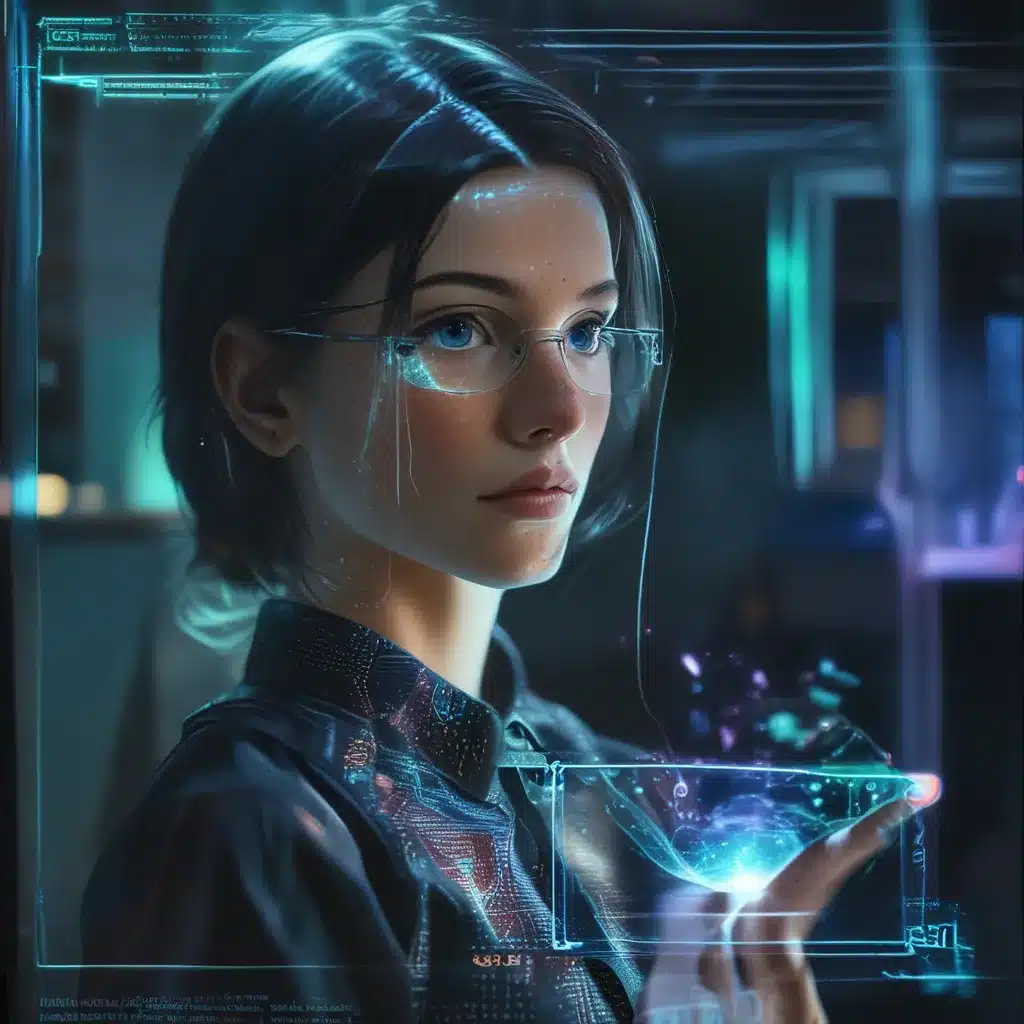Holograms – Sci-Fi or Soon Reality?
Whoa, hold onto your lightsabers, folks! We’re about to dive headfirst into the wild and wonderful world of holograms. Remember those iconic scenes from Star Wars, where Princess Leia’s image would magically appear, floating in mid-air? Well, get ready, because that sci-fi fantasy is about to become our reality sooner than you might think.
The Rise of Augmented Reality
Just a few decades ago, the idea of holograms being anything more than a futuristic pipe dream was, well, just that – a dream. But thanks to the meteoric rise of augmented reality (AR), those old-school sci-fi visions are starting to feel a whole lot more tangible.
As Blippar’s blog points out, AR is now making “Star Wars-like holograms a reality.” Companies are quickly realizing the potential of this technology, with more and more of them exploring ways to bring holographic displays into the mainstream.
Imagine being able to see a life-sized 3D projection of the person you’re talking to on the phone, right there in the room with you. Or how about visualizing your favorite over-the-counter medication in stunning 3D, so you can fully understand how it works? These are the kinds of mind-bending possibilities that AR is now making possible.
The Holographic Journey
But the road to holographic reality hasn’t always been a smooth one. In fact, the history of this technology is filled with its fair share of ups and downs.
As the Light2015 blog explains, the foundations of holography were laid way back in the late 1940s by a Hungarian scientist named Dennis Gabor. He came up with the concept of storing 3D information as a diffractive interference pattern that could be reconstructed using light.
However, it wasn’t until the invention of the laser in 1960 that holography really started to take off. Suddenly, researchers had access to the coherent light they needed to make Gabor’s vision a reality. Over the next few decades, we saw some major milestones, like the development of the off-axis transmission hologram and the reflection hologram.
But despite all this progress, holography just couldn’t seem to live up to the lofty expectations set by science fiction. Static holograms became popular for a while, but their novelty soon wore off. And the idea of dynamic, moving holographic displays? Well, that remained firmly in the realm of fantasy.
The Digital Holographic Rebirth
Just when it seemed like holography was doomed to forever languish in the shadows, a digital renaissance began to take hold. As the Light2015 blog details, the past couple of decades have seen the emergence of “holoprinters” – devices that can print high-quality, full-color digital holograms.
These holoprinters work by using lasers to encode tiny holographic “dots” onto light-sensitive polymer sheets. Each of these dots, or “holopixels,” contains a unique view of the 3D scene, allowing the hologram to be viewed from different angles.
The results are nothing short of breathtaking. These digital holograms can be used for a wide range of applications, from military terrain visualization to medical imaging to scientific data presentation. And the best part? They can be viewed just like any other reflection hologram, simply by illuminating them with a bright light.
The Road Ahead
But wait, there’s more! The journey towards true holographic displays, the kind we’ve seen in sci-fi movies, is also steadily progressing. As the Light2015 blog explains, researchers have been making significant strides in areas like acousto-optical devices, rewriteable holographic materials, and even tiled arrays of complex electro-optical elements.
The holy grail, of course, is a holographic video display that can create true 3D images that appear to float in mid-air. And while we’re not quite there yet, the LinkedIn article suggests that we could see this technology become a reality within the next five years.
Just imagine the possibilities – no more flat, 2D screens, but instead, fully immersive, three-dimensional experiences that blur the line between the digital and physical worlds. Imagine walking around a holographic model of a new building, or attending a virtual meeting where your colleagues’ lifelike images are floating right in front of you.
Holograms for All
Of course, as with any emerging technology, there are still plenty of challenges to overcome. The computational power required to generate these holographic images is immense, and the hardware needed to display them can be bulky and expensive.
But if the past is any indication, those hurdles will be cleared, one by one. As the Light2015 blog points out, researchers are already finding ways to simplify the underlying technology by imposing certain physical constraints, making it more accessible and affordable.
So, while we may not be taking holographic communication for granted just yet, the day when we can all enjoy the magic of holograms is fast approaching. And who knows, maybe one day soon, we’ll be able to have our very own digital Princess Leia moment, right here in the real world.
In the meantime, keep your eyes peeled and your imagination running wild – because the future of holograms is looking brighter than ever. And if you want to stay on the cutting edge of this incredible technology, be sure to check out https://itfix.org.uk, where our team of tech experts is always working to bring the latest and greatest innovations to life.













